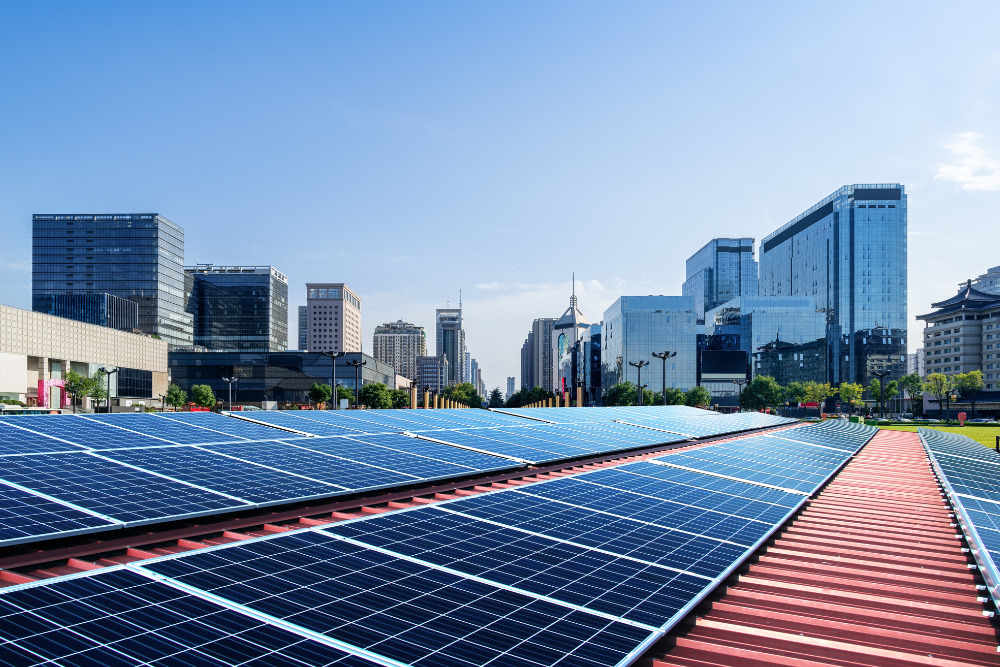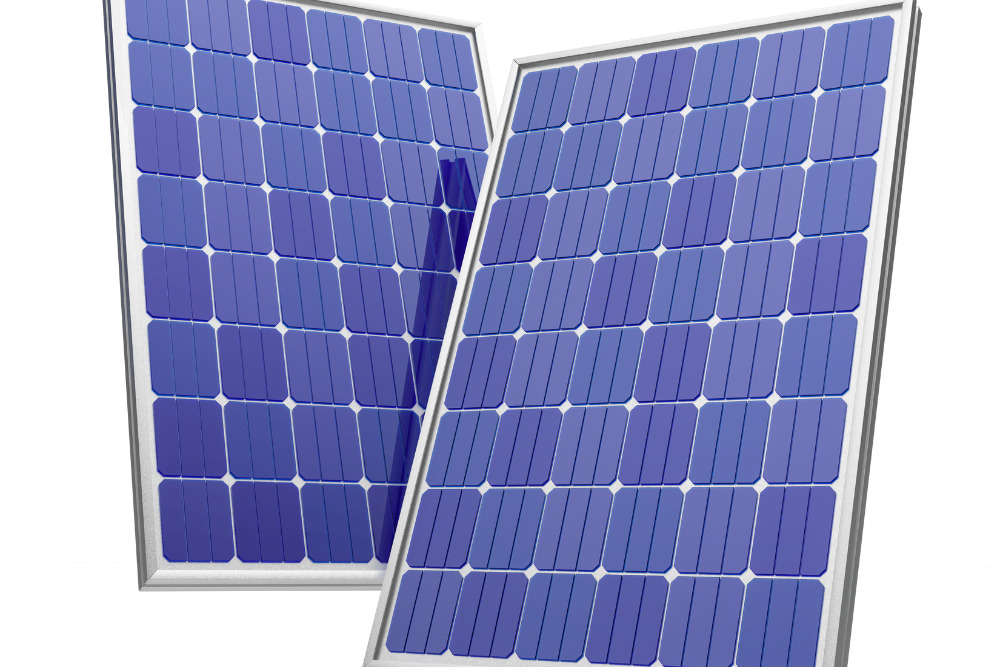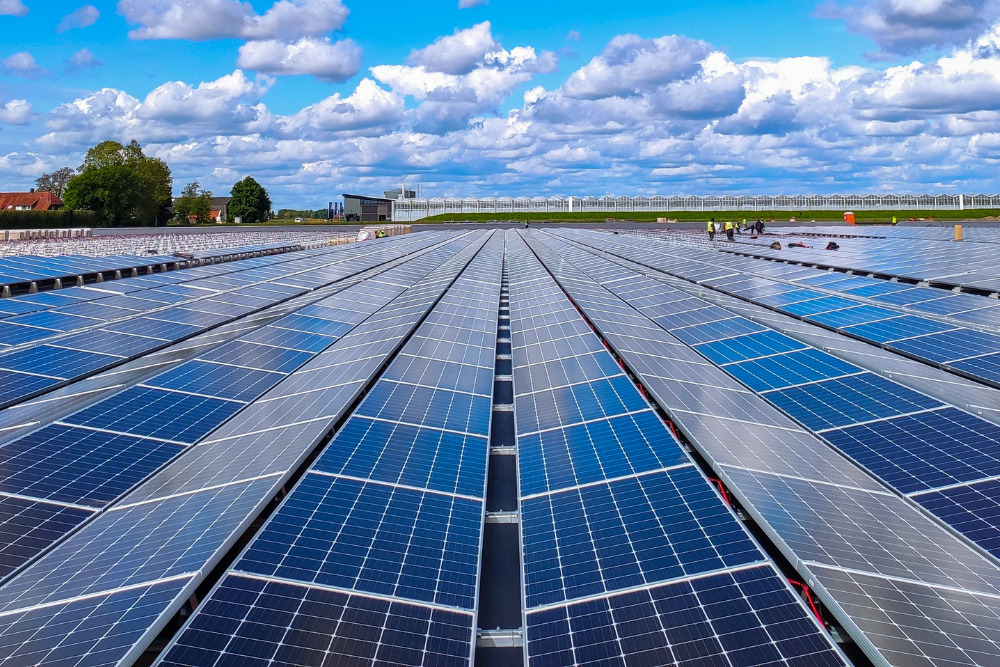
Most commercial panels contain 60-96 photovoltaic cells, though there are some larger ones typically reserved for utility-scale applications. The size of solar panel you need will be based on your installation space and energy needs.
When installing a commercial solar panel system, the size and weight of the panels is an important consideration. The panels are large and heavy, so if mounting a solar array on the roof of a commercial property, ensuring both available roof space and that they can be supported without stressing the structure to which they’re mounted is crucial.
On the other hand, larger panels produce more electricity, so a business with high energy needs may choose a ground-mounted solar array to support the use of large panels.
What Affects The Size Of Commercial Solar Panels?
The size and weight of commercial solar panels vary depending on a few factors:
- Solar cell type. Solar cells can be monocrystalline, polycrystalline, or thin film. The latter is the thinnest and most lightweight of all panel types, but is the least efficient.
- The number of solar cells. The more cells in the panel, the larger the panel itself. Most commercial panels will contain 60-96 photovoltaic cells, with 72 cells being the most common. The solar cells are arranged in a rectangular or square grid, and the average 72 cell panel needs about 20 square feet of installation space.
- Manufacturer. Solar panel sizes may vary slightly among manufacturers.

What Is The Most Common Size Commercial Solar Panel?
Sizes of solar panels for commercial solar installations typically include:
- 60 cell, laid out as a 6 x 10 grid
- 72 cell, laid out as a 6 x 12 grid
- 96 cell, laid out as a 8 x 12 grid
The thickness of these panels is generally between 1.5 inches to 2 inches, and their weight is between 40-50 pounds.
The average solar panel size for commercial use is 72 cells, approximately 78x39 inches. Panels this size produce 350-400 watts, making them ideal for large-scale solar installations.
The 72-cell panel is particularly popular because it offers a good balance between cost-effectiveness and efficiency. This versatility makes the installation process more manageable and often means these panels can be installed in existing solar arrays.
What Is The Largest Commercial Solar Panel?
The largest commercial solar panels are 700w panels with 144 cells. While these panels take up a bit more real estate, doubling the wattage makes this size ideal for large-scale commercial installations.
700w panels are not common. A business with high energy needs should work with an expert commercial solar company to design an array and source these extra large panels to ensure the business gets the most energy production for the premium they spend.

How Many Commercial Solar Panels Do You Need?
Determining the appropriate system size and number of panels for your business requires evaluating a number of factors, including current energy costs and growth projection.
The type of solar cell technology you choose also determines how many panels you’ll need. Remember, monocrystalline solar panels are more efficient than polycrystalline, so you’ll need fewer of them. For businesses considering other types of solar panels, like thin-film, to take advantage of the passive architectural elements of their building, you’ll need even more panels as most thin-film technology tops out around 15% efficiency.
A reputable commercial solar installer will do a thorough analysis of your installation space, current utility bills, and projected growth to design a solar power system to meet your needs.
Are Commercial Panels Different Than Residential Panels?
Although commercial and residential solar energy systems are designed to deliver clean energy by converting sunlight into electricity, they differ in several important ways:
- Size. The average homeowner won’t need a solar system on the same scale as a commercial user. For this reason, commercial solar systems are larger, heavier, and more cumbersome.
- Higher wattage. Commercial buildings typically have higher energy needs and require more powerful panels to sustain their needs.
- Mounting systems. Residences and buildings have different architecture and therefore have additional requirements for solar panel installation. For businesses with flat roofs, additional mounting hardware is needed to tilt the panels to the optimal angle to capture the sun. Most residential roofs are already pitched at an acceptable angle.
- Installation. Because of the size of the panels, solar panel installation for commercial use can take more time and manpower than residential solar panels.
- Cost. The upfront cost for residential installation of a solar system is far lower than that of a commercial system. In both cases, there are significant incentives, tax credits, and rebates for commercial users of solar panels. Businesses can check the Database of State Incentives for Renewables & Efficiency for programs that apply to their location.
- Regulatory considerations. Commercial solar installations may have to comply with additional regulations and permits compared to residential installations. This can include zoning restrictions, building codes, and utility interconnection requirements specific to commercial properties.
While there are differences between commercial and residential solar panels, the underlying technology and principles of solar energy generation remain the same. And both will serve to lower the overall electricity bill and provide a positive return on investment.


